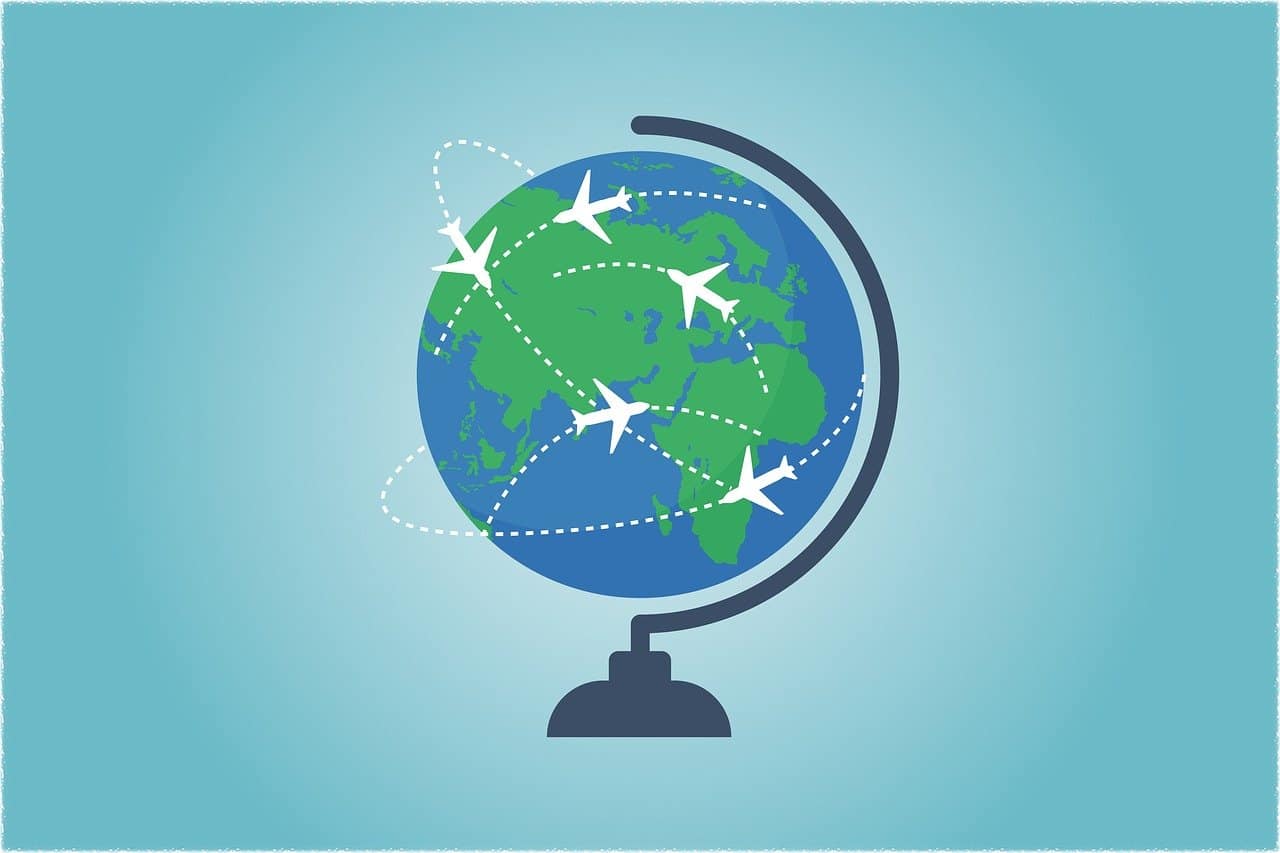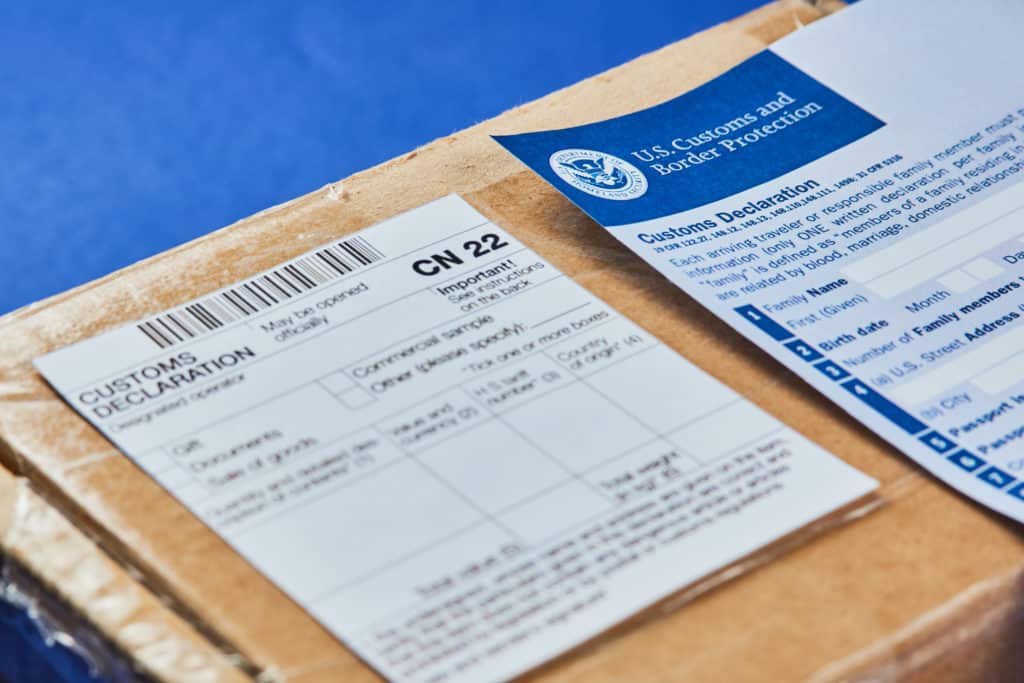The dreaded message from the carrier has arrived: your package has been stopped in customs clearance. This frustrating situation can often arise when shipping internationally to or from the UK. A customs hold can be a major headache for ecommerce businesses and is one of the primary reasons international logistics is so complicated.
Whether you’re a seasoned veteran in the ecommerce industry or just beginning to explore the possibilities of selling your products internationally, understanding the nuances of customs clearance is crucial. From documentation errors to unexpected delays, the challenges can initially seem daunting. But don’t panic; we are here to equip you with the knowledge and tools necessary to overcome these obstacles and optimise your shipping operations.
In this article, we will explain why parcels get stuck in customs, how to clear them, and how to prevent it from happening again. We’ll provide actionable tips and practical advice to help you streamline your customs clearance procedures. Let’s get started and make your international shipping operations a breeze!
Table of contents
- What is customs clearance?
- The customs clearance process explained
- Common challenges in customs clearance
- How long does customs clearance take?
- 8 expert tips for smooth customs clearance
What is customs clearance? Understanding the meaning and process of custom clearance
Customs clearance is the process by which goods move through customs at their destination country, ensuring compliance with all relevant regulations and legal requirements. This involves preparing and submitting the necessary documentation, paying applicable duties and taxes, and securing permission for the goods to enter the country. Understanding what customs clearance entails is crucial for avoiding delays, preventing fines, and ensuring that international shipments reach their final destination smoothly and efficiently.
Why is customs clearance so important for international shipping?
Customs clearance is an important part of international shipping because it ensures that all legal and regulatory requirements are met, allowing your goods to enter a country without any issues. If your goods are not cleared by customs, you can face several problems:
- Documentation errors: Incorrect or missing paperwork can cause big delays, holding up your shipment at customs until everything is sorted out.
- Import duties and taxes: Figuring out and paying these fees can be tricky, and if not done right, can lead to delays.
- Regulation compliance: Each country has its own rules, and if you don’t follow them, you might face fines or have your shipment returned.
- Shipping delays: Unexpected customs issues can delay deliveries, disappointing your customers and hurting your reputation.
- Cost management: Delays and compliance problems can lead to extra storage fees, penalties, and higher shipping costs. Want to learn more about how to save money when shipping internationally? Read our blog!
Getting ecommerce customs clearance right is therefore vital for keeping your operations smooth, costs low, and customers happy.
The customs clearance process explained
To make the customs process crystal clear, let’s break down the typical steps:
Step 1: Documentation validation
In this initial phase, a customs officer carefully reviews your shipment documents to ensure everything is in order. Any missing, incomplete, or incorrect information is flagged. Sometimes, the contents of the package are examined to confirm they match the declared information.
Step 2: Duties and Taxes
Next, customs duties and import taxes are determined based on the contents and documents. These fees vary depending on factors like item type and value. To determine the correct tariffs, import regulations of the European or non-European country are consulted.
For instance, ecommerce retailers may benefit from laws that expedite clearance or waive duties and taxes for low-value items. Import duties usually apply to items of value, with taxes calculated based on assigned percentages. For example, goods worth over £135 shipped to the UK are subject to VAT. Tariffs are typically calculated based on product value (ad valorem), although variations may occur based on country of origin.
Step 3: Additional payments
If the shipment incurs tax and excise, customs personnel verify payment and may request additional or missing payments. A paid shipment (DDP) usually gets through customs faster, making it an optimal choice for international sales. Conversely, with unpaid delivery (formerly known as DDU, now replaced by DAP), freight and customs clearance fees are paid, but not duties. Customs forwards the package to a broker who collects applicable fees from the recipient before clearing the shipment.
Do these terms sound like a foreign language to you? Find out more about the abbreviations in our blog about Incoterms.
Step 4: Wait for updates and fulfill missing duties
If you’re confident that everything is in order with your shipment, the next step is simply to wait for updates. After receiving all the relevant details, you will usually need to send the Customs Office copies of the following documents:
- the invoice showing payment for the shipment,
- your VAT number or tax identification number,
- ID or company details,
- and a statement regarding the contents of the parcel.
The Customs Office or an intermediary will notify you of any applicable or additional taxes that need to be paid. Ensure these are settled in full to remove any customs detention on your parcel.
Step 5: Customs Clearance
Once all the necessary duties and taxes have been paid, the package is ready to go! The assigned carrier will then transport the cargo to its final delivery destination, ensuring a seamless end-to-end shipping process.
Common Challenges: Why packages get held up in customs
Understanding why your packages sometimes get held up in customs can be as perplexing as navigating a maze. Therefore, we will shed light on the common challenges that can cause delays and equip you with the knowledge to breeze through customs with confidence.
Now, let’s dive into the common hurdles that might snag your shipment along the way:
- Non-payment of customs duties: Failure to pay required customs duties can lead to holds in customs.
- Insufficient shipping documentation: Incomplete or missing paperwork can cause delays as customs officials need accurate documentation to process shipments.
- Incorrect use of customs code: Misclassification of goods with the wrong customs code can result in holds at customs.
- Counterfeit goods: Shipments containing counterfeit or pirated items may be seized by customs authorities.
- Prohibited or dangerous goods: If your parcel contains items on a country’s list of restricted or banned goods, it may be held up in customs.
- Errors in shipment specification: Mistakes in declaring the contents and value of the shipment can lead to delays.
- Packaging non-compliance: Packages that do not comply with regulations regarding dimensions and weight may face customs holds.
Understanding these challenges empowers you to take proactive steps to ensure smooth customs clearance for your shipments, helping you deliver to your customers with ease and efficiency. Keep reading for more tips on how to ensure a smooth customs clearance!
How long does customs clearance take?
Curious about customs clearance timelines? You’re not alone!
UK customs clearance usually takes only minutes or hours, but it can extend to days or even weeks if there are issues, such as missing documentation, or if your goods need inspection.
The duration for clearing a stuck package through customs can vary, often due to delays in customs procedures. But fear not, as minor hiccups or busy periods like holidays typically don’t heavily impact delivery times. Under normal conditions, these issues are usually resolved within 2 to 3 working days.
However, if irregularities are detected by the Customs Office, the international shipment may face a more extended and challenging clearance process. Within the European Union, customs clearance typically takes only a few days once any detected issues are sorted out.
On the flip side, if you’re shipping to non-European areas like China, customs procedures may take significantly longer to resolve, potentially stretching to several months.
Understanding these timelines helps you plan ahead and manage expectations for your shipments, ensuring smooth sailing for your international deliveries!
Navigating Customs Clearance: Expert tips for smooth sailing and avoiding delays
Now that you’re well-versed in customs clearance – from its process to potential challenges – it’s time to dive into actionable tips for seamless sailing through customs. Get ready to power through with confidence as we unveil expert strategies to ensure smooth shipping and bypass any hurdles along the way. Let’s jump in and make your customs clearance a breeze!
Tip 1: Fully understand what your responsibilities are as a sender
Understanding your responsibilities as a sender is the best way to prevent parcels from getting held up in customs. In ecommerce logistics, clarity is key – everyone involved should know what fees they’re responsible for, what information they need to provide, and how to ensure smooth shipping processes.
Let’s take a look at the responsibilities of senders and recipients of parcels:
Sender’s responsibilities |
Recipient’s responsibilities |
| Pack shipments according to applicable regulations. | Ensure that the sender has entered the name and address correctly. |
| Create shipping labels that contain all necessary and correct information, such as tracking codes, names and addresses, weight of item, date of shipment, etc. | Pay necessary import duties and shipping charges. |
| Check the laws pertaining to prohibited categories of goods in different countries. | Provide proof of address and identity if required. |
| Pay the required taxes, customs bills, VAT and general duties. | Provide other relevant documents, such as purchase orders, industrial licenses, insurance certificates, etc., when applicable (usually for commercial imports). |
| Provide all information and documents needed (see tip 2). | Receive and inspect parcels upon delivery and notify the sender or carrier of any issues or damages. |
| Follow customs clearance instructions as needed. | |
| Ensure timely payment of any outstanding fees. |
Tip 2: Ensure accurate documentation
Accurate documentation is the key to smooth customs clearance. Make sure you have all the necessary customs clearance documents ready to go. Here’s a list of documents you’ll typically need:
- Commercial Invoice/CN22/23: These documents should contain all the essential information, including addresses, shipper contact details, and the correct value of the items being shipped. In our blogs on the Commercial Invoice and CN22 and CN23 documents, we take a closer look at the differences and when they are needed.
- HS codes: Ensure that the Harmonised System (HS) codes are entered correctly. These codes classify goods for customs purposes and are essential for accurate customs clearance.
- Itemized list: Generate a detailed list showing the number of items included in the shipment. This helps customs officials verify the contents quickly and accurately.
- Customs declaration form: Include a customs declaration form with an accurate description of the items and their corresponding values. This document provides crucial information for customs clearance.
In addition to the documents mentioned, there may be other specific documents required depending on the nature of the goods being shipped, the destination country’s regulations, and the shipping method. It’s essential to conduct thorough research or consult with your shipping provider or customs broker to ensure you have all the necessary documents for a smooth customs clearance process.
If your package gets stuck in customs, don’t panic! The first thing to do is double-check your documentation. Ensure that all details are accurate and up to date. Accurate documentation not only speeds up the customs clearance process but also minimises the chances of delays and complications. So, take the time to review your paperwork thoroughly – it could make all the difference!
Tip 3: Stay updated on regulations
Staying informed about customs regulations is essential for smooth shipping operations. Here’s how to stay ahead:
- Keep up to date: Stay informed about the latest customs regulations and requirements for each destination country. Regulations can vary widely between countries and may change frequently, so it’s crucial to stay updated on any new developments.
- Regular checks: Make it a habit to regularly check for updates or changes in policies. This can be done by subscribing to newsletters from customs authorities, following industry publications, or consulting with customs brokers. Additionally, utilise online resources and government websites for the most accurate and up-to-date information.
- Seek expert advice: If you’re unsure about specific regulations or how they may apply to your shipments, don’t hesitate to seek advice from customs brokers or shipping industry experts. They can provide valuable insights and guidance to ensure compliance with regulations and avoid any potential pitfalls.
Tip 4: Work with experienced carriers
By choosing carriers with a strong track record in handling customs procedures efficiently, you can minimise the risk of delays and complications. Their experience and expertise make it easy for them to navigate the complexities of customs clearance, giving you peace of mind knowing that your shipments are in capable hands.
If you’re not sure which carrier to choose, check out our blogs where we compare the top carriers in the industry! This will help you make an informed decision for your shipping needs.
- Delivery company comparison for the UK
- Carrier comparison for Germany
- International carrier comparison for the Netherlands
- Italian carrier comparison
Tip 5: Make use of Paperless Trade
Embrace the future of shipping with paperless trade! This electronic process allows you to transmit your customs documents digitally, eliminating the need for multiple printed copies. With paperless trade, your customs clearance documents are automatically sent to the shipping carrier and linked to your shipment.
This not only saves you time and money but also helps protect the environment by reducing paper use. Additionally, paperless trade decreases the chance of delays, as any issues can be resolved more quickly. Remember to verify the shipping conditions and customs regulations with your carrier to ensure a smooth, efficient process every time you ship internationally.
To find out which carriers offer Paperless Trade, check out our Help Center article.
Tip 6: Communicate with your customers
Keeping your customers in the loop is crucial for a positive shipping experience. Inform them about potential delays and customs requirements ahead of time. Clear and proactive communication helps manage expectations and enhances customer satisfaction!
Use multi-language tracking to ensure all your customers can easily follow their package’s journey, regardless of their preferred language. Many shipping software solutions offer tracking updates in multiple languages, allowing your customers to receive real-time information about their shipment’s status in a language they understand. By keeping your customers updated every step of the way, you build trust and create a smooth, transparent shipping experience that keeps them coming back.
Tip 7: Who to contact if customs clearance time is excessive
Remember, customs clearance can take up a lot of time, sometimes even up to a month! If you feel that the package is stuck in customs there are a few things which you can do. The first thing is to check the tracking page of the carrier which you used to ship your parcel. The tracking page will show detailed information if your package is indeed already at customs.
If this is the case, you can contact the shipping software provider or carrier you have relied on to ship your package via their online helpline or phone number on the website.
The company’s customer service representatives will be able to confirm what the latest status of the package is. Keep in mind that influencing the customs clearance process is not possible by either the shipping software provider nor the carrier.
If you want 24/7 customer service and access to affordable shipping rates to every corner of the world, you should take advantage of a multi-carrier strategy. Read on to learn more about it!
Tip 8: Implement shipping software
Take your shipping game to the next level by implementing shipping software! Utilising advanced shipping software helps automate documentation and compliance checks, ensuring everything is in order before your shipment even leaves the warehouse.
These software solutions streamline the customs process, significantly reducing the risk of errors and delays. By automating these tasks, you save time, reduce stress, and improve overall efficiency. Plus, shipping software often provides real-time tracking and updates, keeping you informed every step of the way. Invest in shipping software to simplify your customs clearance and keep your international shipping running smoothly.
Smooth ecommerce customs clearance with Sendcloud
To scale your business and make your overseas shipping fast, easy and affordable, you need to rely on the right partner.
Sendcloud has helped more than 25,000 online shops across Europe master international shipping with an integrated solution that offers:
- Effective multi-carrier shipping: Ship with the best carriers around the world with local and international carriers.
- Automated creation of customs forms: Enhance compliance and accuracy with automated customs docs.
- Shipping intelligence: Know exactly which carrier and shipping methods to use in foreign markets.
- International returns: Give your customers peace of mind with international returns.
- Multi-language notifications: Offer a localised shipping experience to customers with multi-language tracking and returns.
- Shipment protection: Protect your international parcels with international Insurance.
Ready to streamline your international shipping? Learn more about international shipping with Sendcloud!











